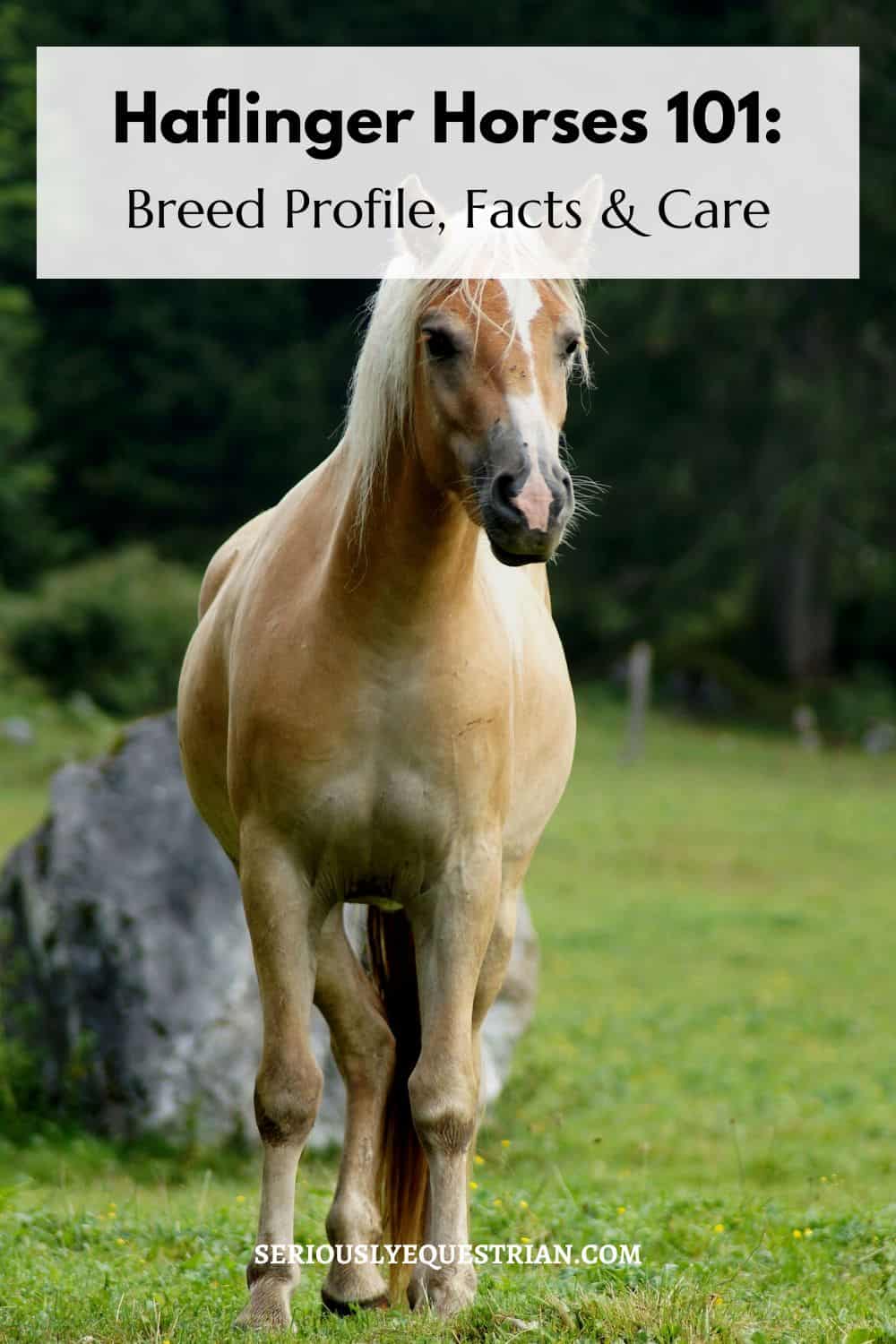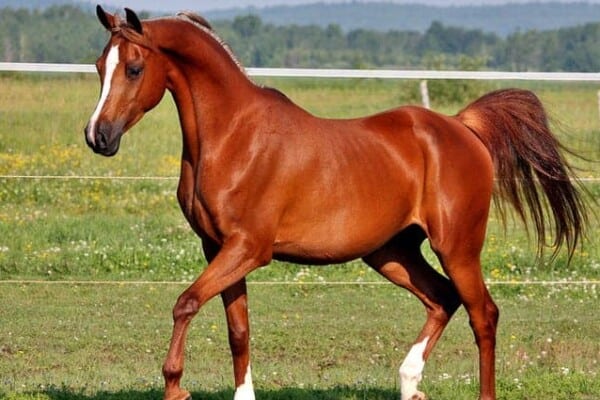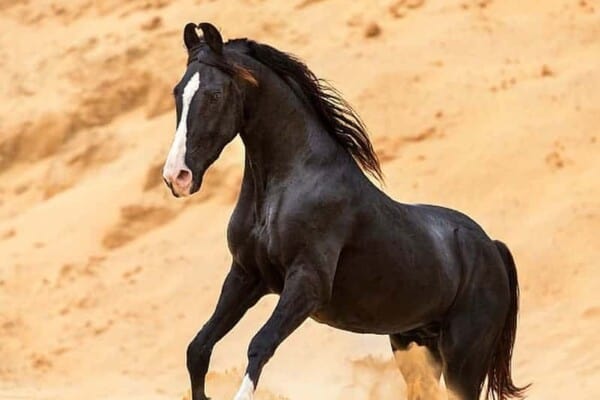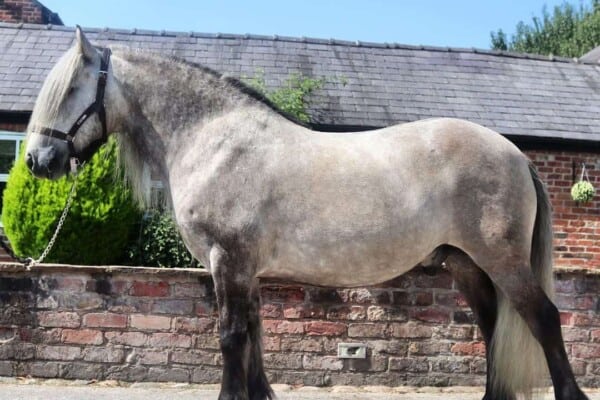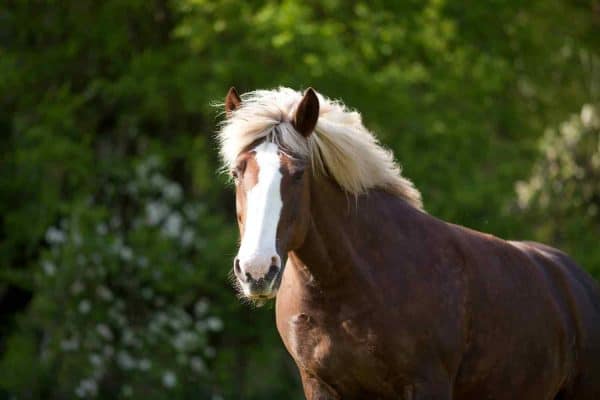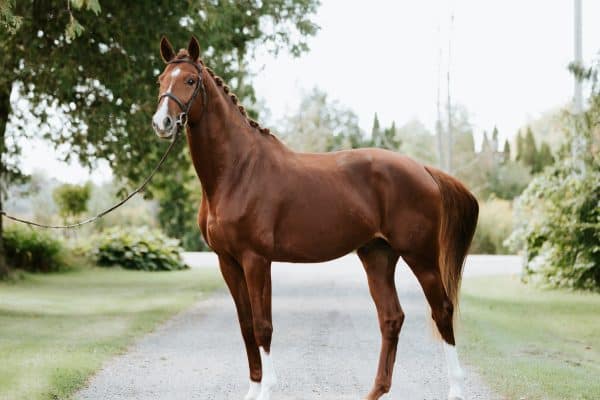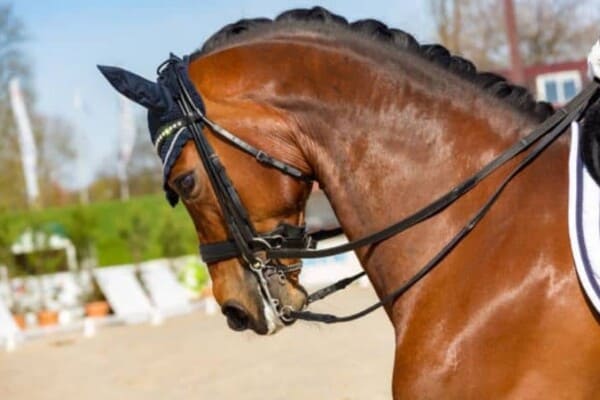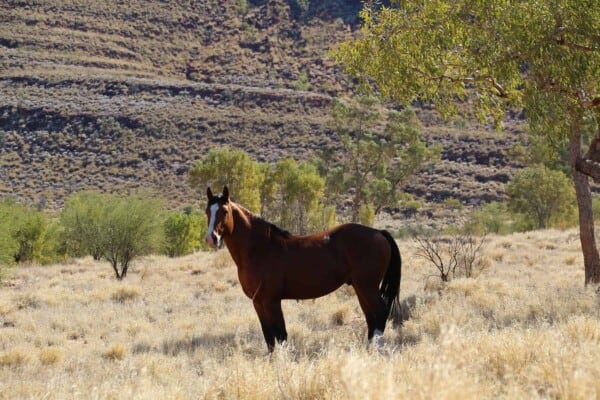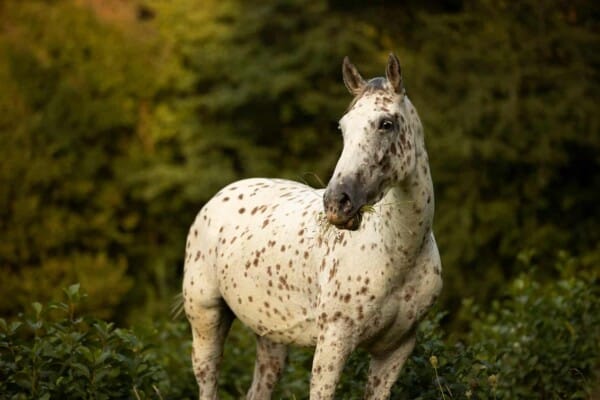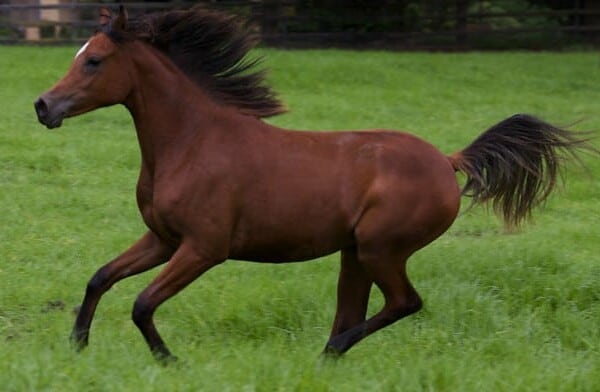Haflinger horses are some of the strongest and most hardworking animals you’ll ever have around your farm, and that’s a fact.
Not only that but they’re also amongst the hardiest and most compact horses you’ll ever come across, which makes them a perfect choice for both children and adults alike.
They’re small and athletic, and on top of that they also excel in a plethora of different practices and disciplines.
Most notably they are always seen at the top of the food chain in practices such as dressage, trail riding, jumping and driving, to name a few.
With that being said though, this on its own makes Haflinger horses one of the best options we can think of, although there are also quite a handful of reasons as to why we recommend you should think twice before making your choice.
So, in this short article we will be going over everything there is to know about this beautiful and stout breed.
But before we can get into the logistics behind the modern-day Haflinger horse, we should first take a deep dive into the past, as we go over:
Haflinger Horses’ Origins and History

The Haflinger horse is believed to have originated from the Tyrolean Mountains, which spread between Northern Italy and Austria.
Back during medieval times, these horses would be ridden by travelers that would try to navigate through narrow paths in order to access the nearby mountains.
This task couldn’t be done by any other horse breed, as they were all too large, heavy or clumsy to actually traverse the roads there.
Luckily, the mountainous horse breed was always ready to help, as these horses were agile, strong and surefooted, which is a combination that made for the perfect travel buddy back then.
In the year 1874, a colt by the name of Folie was born. This was a very special birth though, as Folie was a new hybrid horse whose parents were a half-Arabian stallion and a mountain mare.

So, Folie became the world’s first purebred Haflinger horse, and the foundation behind all of the Haflingers that would be born from this moment on.
Because the horse lived in the Hafling village (that was back then in Austria), this breed was officially dubbed as the Haflinger breed, and it quickly became a staple of the area.
Because of its wide use and versatility, this breed made a name for itself as one of the best options you could go for in all of Austria.
By the time the year 1958 came along, the first Haflingers to be ever imported to America were shipped off.
While at first there wasn’t all that much of a need for them, since in America there were no roads that could resemble the ones from Austria, the breed still managed to garner a bit of attention from the locals.
After a while though, the breed started to catch on with everyone, and before long the breed became very popular both around riders and drivers alike.
Appearance and Unique Characteristics
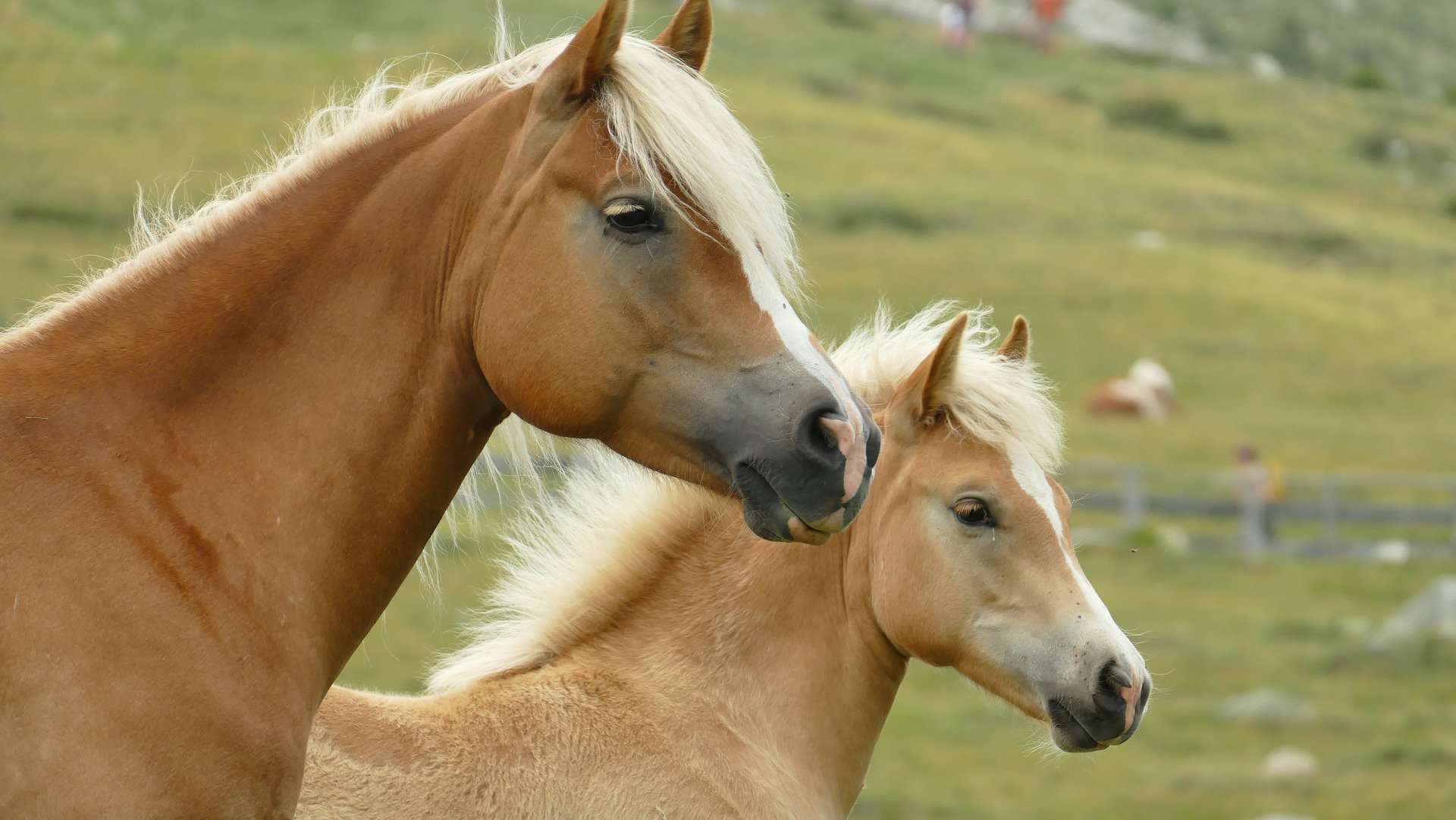
The Haflinger horse is famous for its golden chestnut coat as well as its cream- or white-colored mane and tail combo.
But that’s not the only colors that your Haflinger can sport. In fact, your Haflinger’s coat can also be light gold, or in some cases it can easily get to be darker chestnut or liver chestnut.
The one thing that we can say about almost all Haflingers though is that most of them tend to have white spots on their lower legs and faces, which make them stand out quite a lot.
As far as the most unique characteristics of the breed are concerned, there are quite a handful of things we can mention here:
For one, as mentioned previously this is an incredibly compact and strong horse breed, which in itself is a huge plus for them.
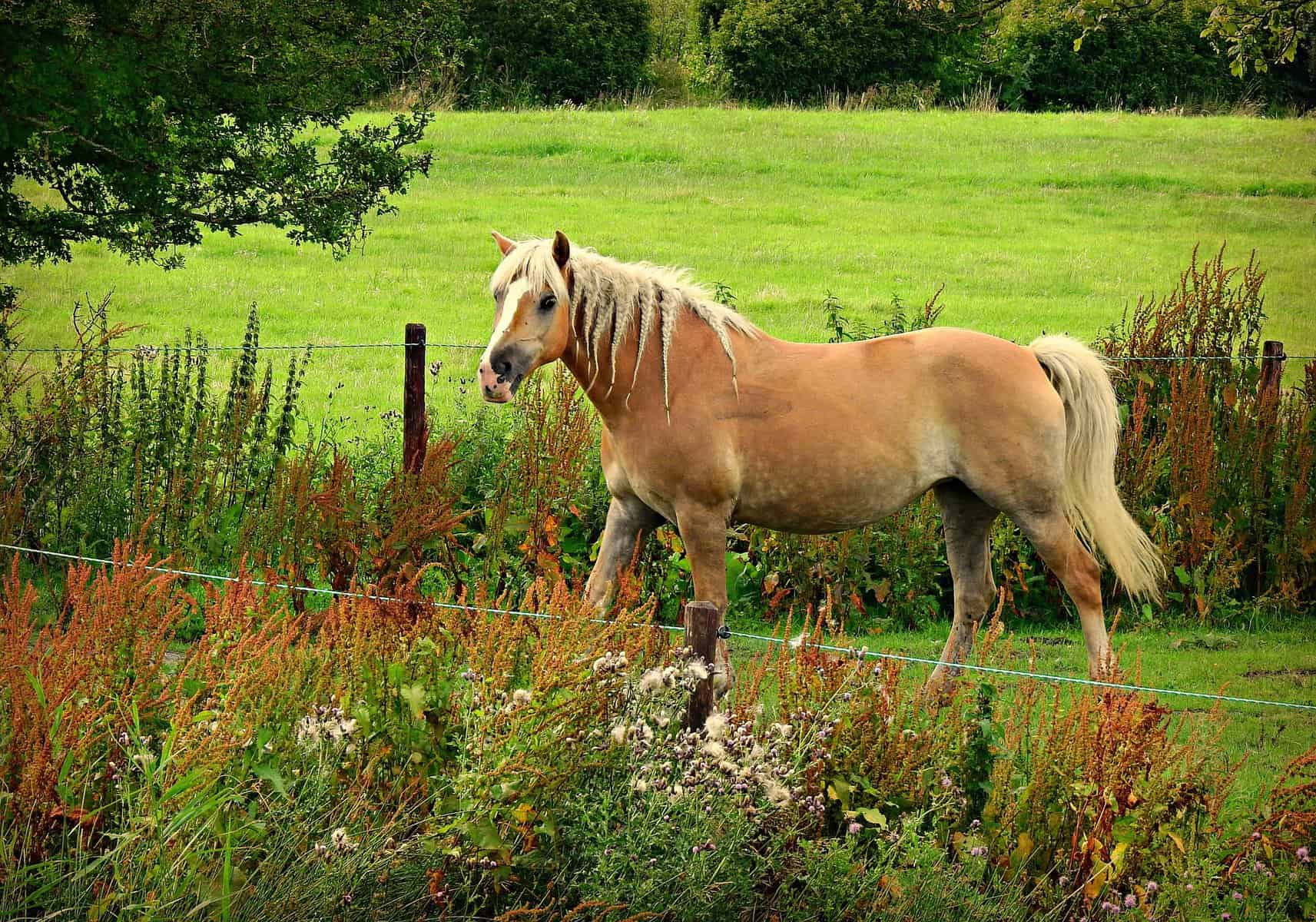
Even though they are a bit on the smaller side, your horse can still carry adults with ease while competing in several different disciplines at once.
But thanks to its small size, this breed can also serve as a great horse for children to ride on. When coupled with their calm and friendly demeanor, it’s no wonder that this is considered to be a great family-friendly horse to invest into.
Their laid-back temperament as well as their quiet and caring nature makes them perfect companions for newbie riders too.
In fact, their quiet demeanor has become a bit of a breed standard requirement which is even checked out during official inspections.
So, if you want to invest into a very kind-hearted and friendly horse breed that your children can play with on a daily basis, you can’t go wrong with the Haflinger horse.
Size, Breeding and Uses
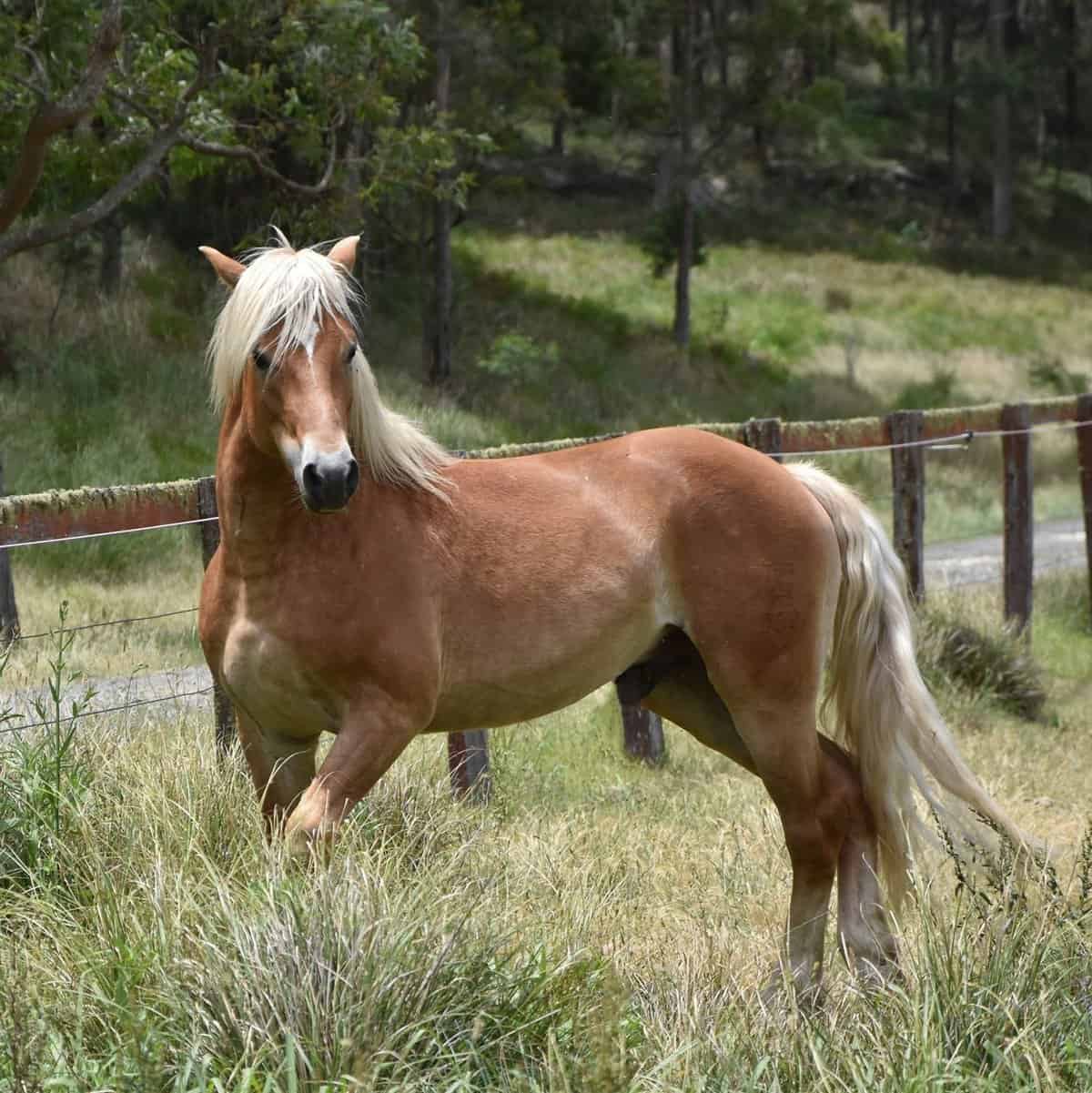
We’ve been talking about the Haflinger horse’s size over and over again, but we have yet to give you any exact measurements.
So, here you have them, most Haflinger horses will be around 13.2 hands high, although in some cases they can also get to be around 15 hands high too.
This is way smaller than the average horse, but even though they may be on the shorter end of the stick, they are still considered to be some of the strongest horses on the market.
Just because they look like ponies that doesn’t mean that they can’t handle the same load as any ordinary sized horse out there.
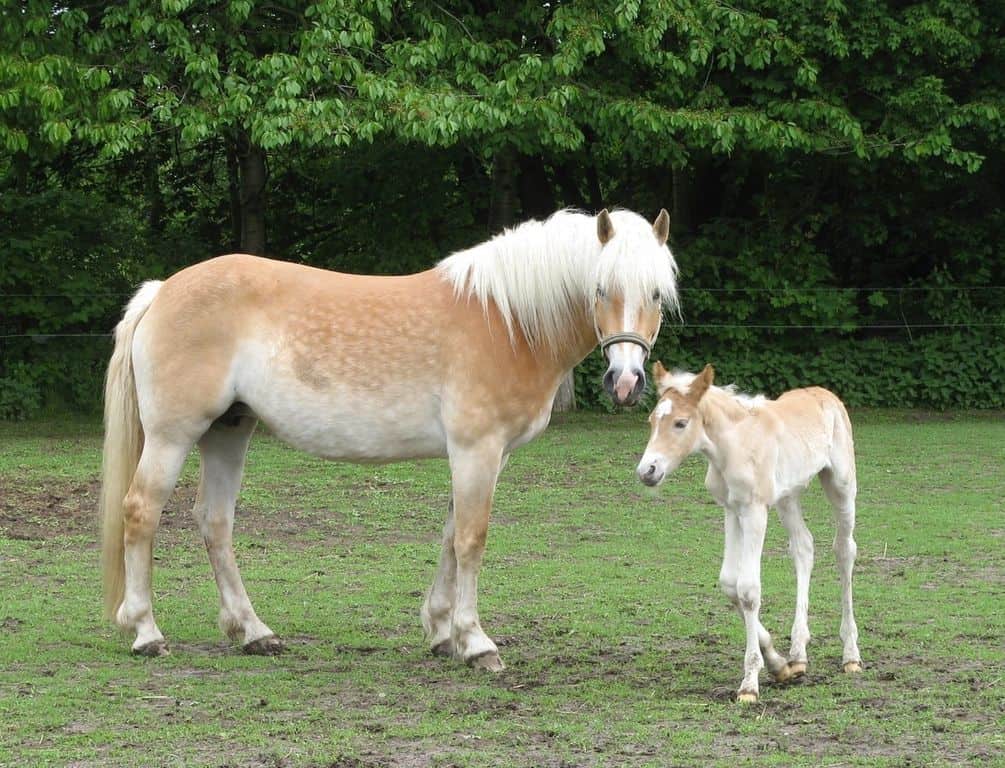
In fact, if you have a big load your other horses can’t seem to pull, why not give your Haflinger horse the center stage and allow them to show you just how powerful they really are?
Back during World War II, the Haflinger breed was specifically bred to be on the shorter side of the spectrum while also being a bit stockier so they could live longer on the battlefield.
After World War II ended though, the focus was shifted towards making the horses as versatile as possible.
This is why the modern-day Haflinger horses can be both ridden and drive with ease, and why they are so versatile these days.
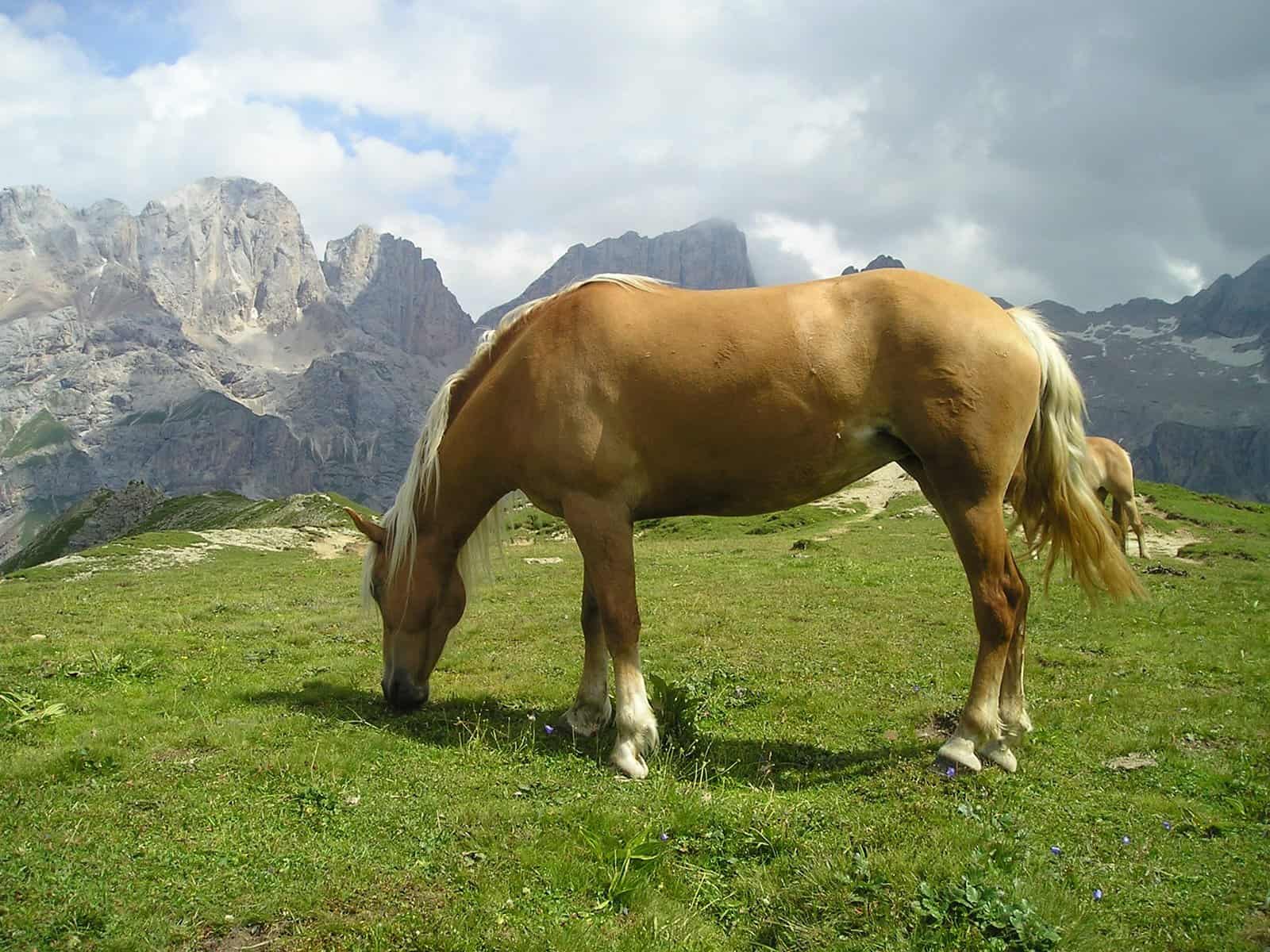
As mentioned previously, they can be used in a lot of different practices, including jumping, dressage and even as a show horse in a lot of cases.
Not only that but because of its strong and sturdy features, this horse also makes for a great option as a vaulting or packing mount.
It can also be used in trail riding, endurance riding and of course, joyriding practices, so it’s pretty much just a universal pick for anything you need.
The breed has even been used in therapeutic riding programs thanks to its gentle demeanor as well as because of its people-loving personality.
Grooming Haflinger Horses
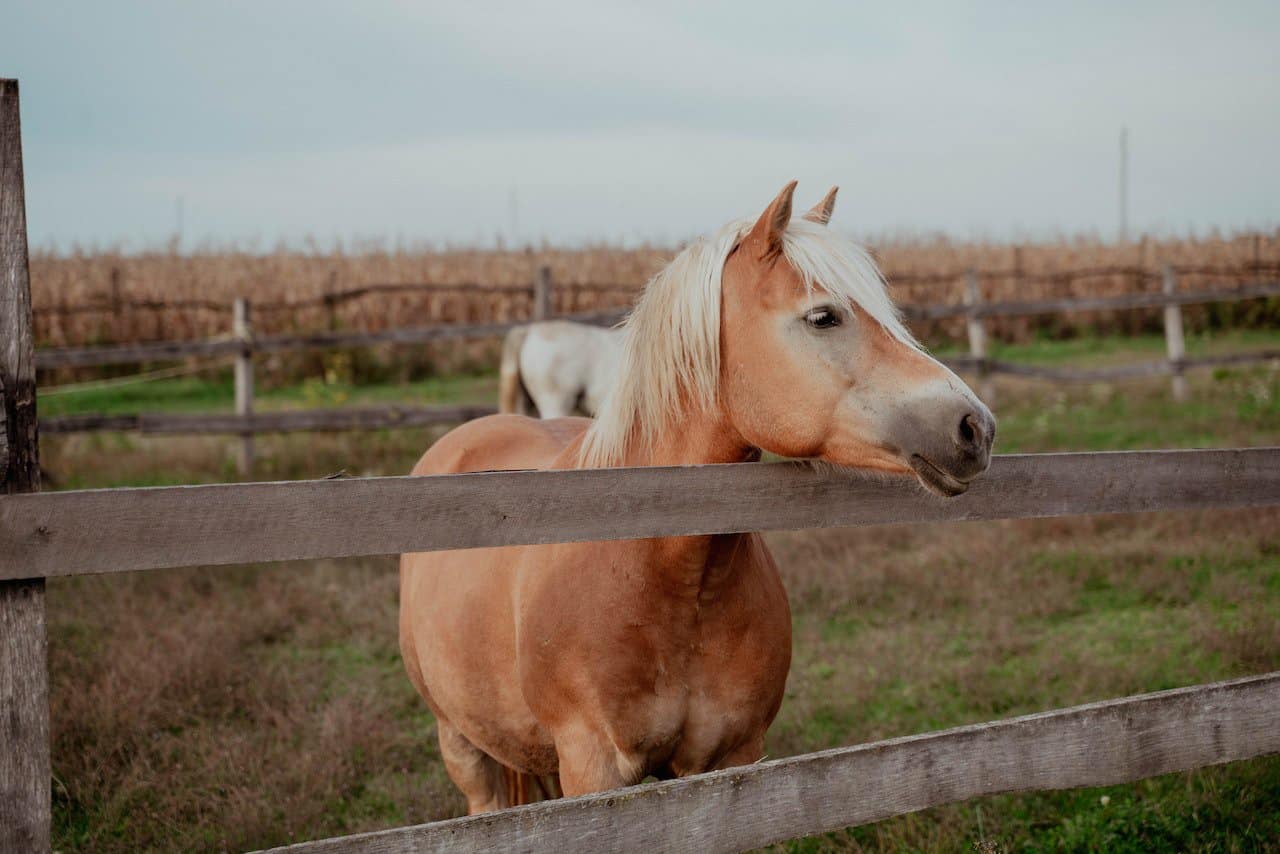
While this isn’t the neediest horse breed that you’ll ever find, it is still worth noting that you will need to groom your horse on a regular basis.
That’s because its thick and long mane, tail and forelock need quite a decent amount of maintenance to be show ready.
At the same time, because they are on the longer side, it shouldn’t come off as a surprise that they can easily get all mucky during winter and spring, so you’ll need to be extra careful when grooming them then.
As far as what you’ll need to do per se, you can expect to have to detangle their hair on a regular basis just so that they don’t end up with any sort of hair breakage.
With that being said though, you won’t need to deal with too much trouble when it comes to their hoof health.
This is because these horses are known for their durable and healthy hooves. Still, you should take the time to pick out from their hooves on a regular basis.
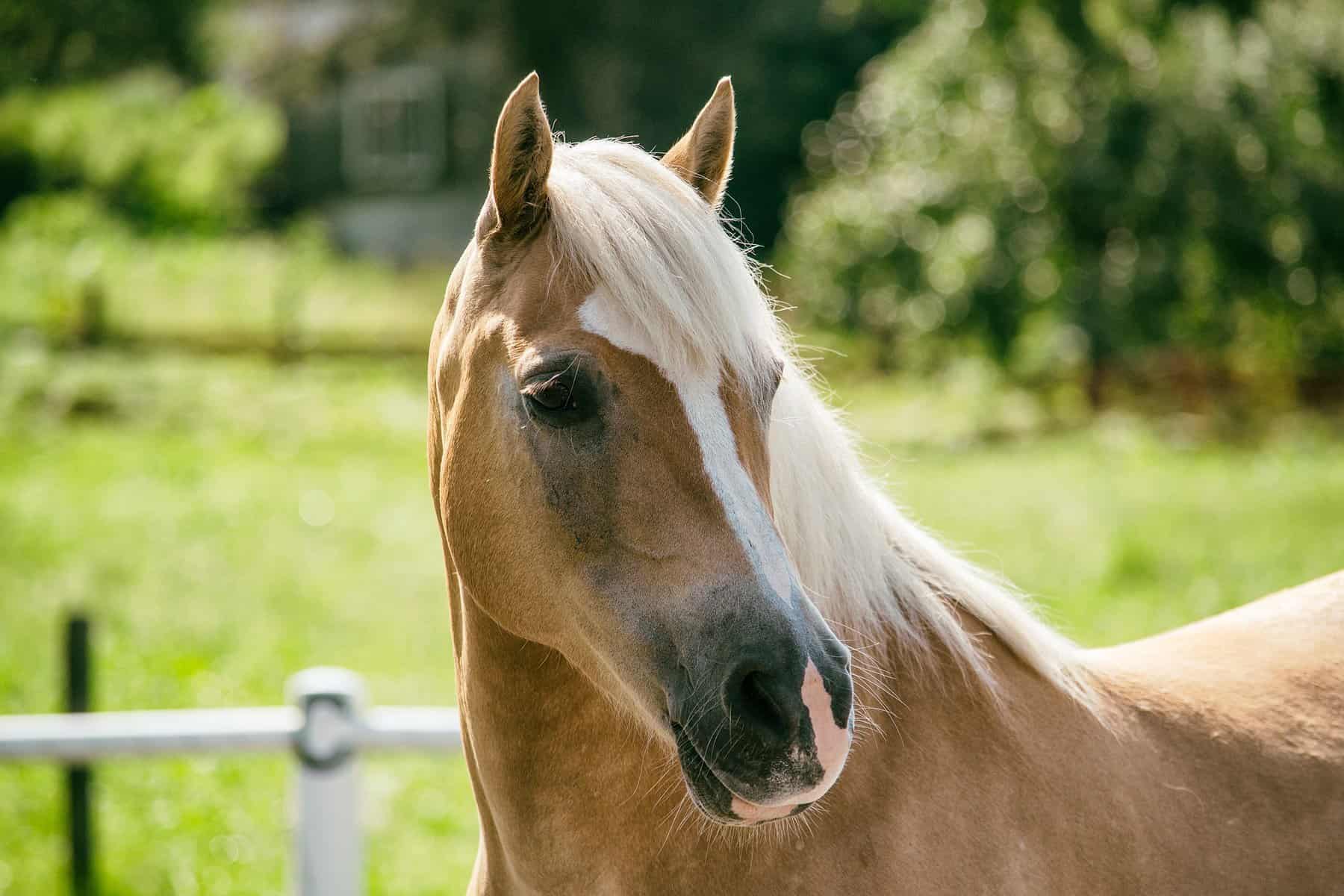
So, if you’re planning on heading off on a ride, we urge you to pick out your horse’s hooves both before and after the joyride.
In doing so, you’ll pretty much just make sure that they will not go through any serious health problems later on down the line, which will also save you a lot of time and money and your horse a lot of unnecessary pain.
You should also invest in regular currying and grooming because in doing so you’ll pretty much help your horse improve the natural golden sheen of their coat.
If you specifically opted for the Haflinger horse because of their looks, you should already know by now that you will need to do a lot of grooming to make sure that your horse looks their best.
But even if you don’t plan on taking your horse out to compete in shows, you should still groom them regularly just to make sure that you are avoiding any health problems that could come as a result of your ignorance.
The Diet and Nutrition of the Haflinger Horse
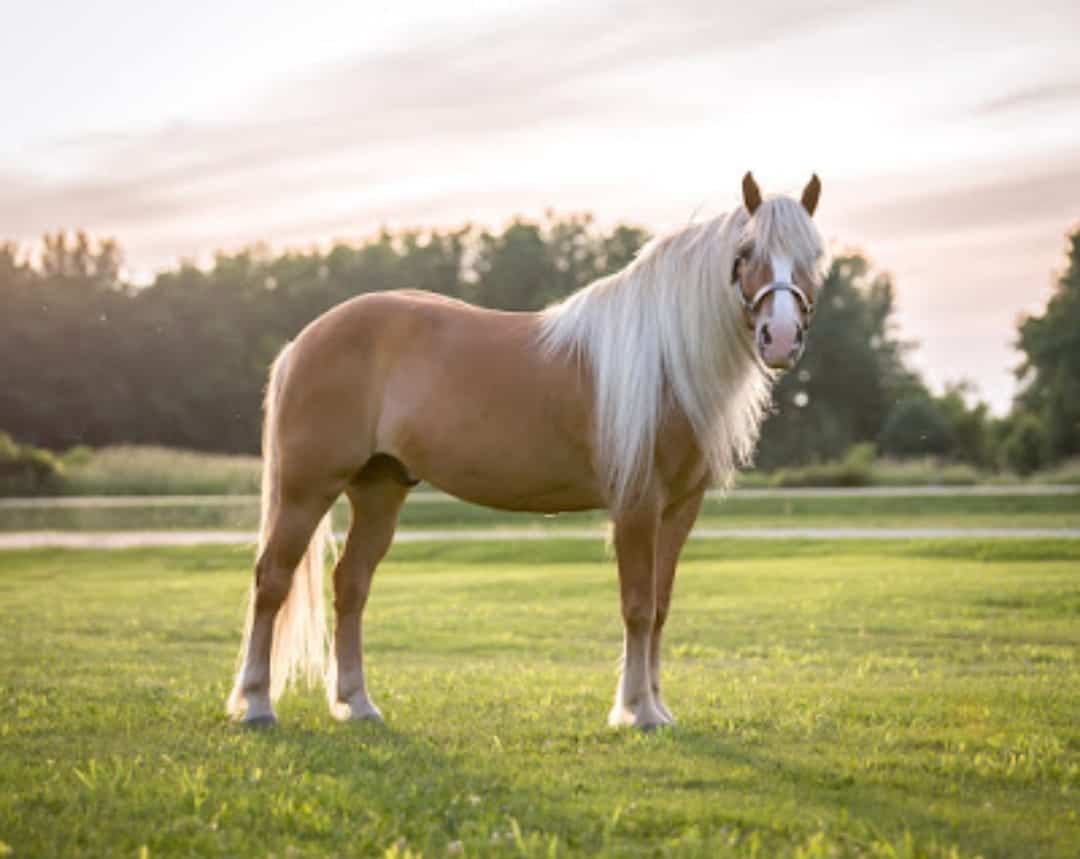
The thing that you need to know about Haflingers is that they’re considered to be easy keepers, as long as you make sure that the diet they consume is very carefully selected and controlled.
Your horse needs very little to no grain to survive and thrive, but at the same time if you plan on putting your Haflinger to work you may need to invest quite a bit into low-sugar and low-starch grain.
At the same time, Haflingers require little hay, so you should have a slow feeder on the ready that can help distribute the portions to your horse to make sure that they don’t get too heavy for their own good.
Haflingers are crazy for grass, but do keep in mind that while they love the taste of it, it isn’t the best choice for them.
This is because grass has a lot of rich sugars which will do more harm than good for your Haflinger, so keep that in mind and don’t give your horse too much time grazing.
If anything, we recommend that you put a grazing muzzle on your Haflinger when they’re out on pasture, just so that they don’t end up consuming too much of it.
Common Health and Behavior Problems
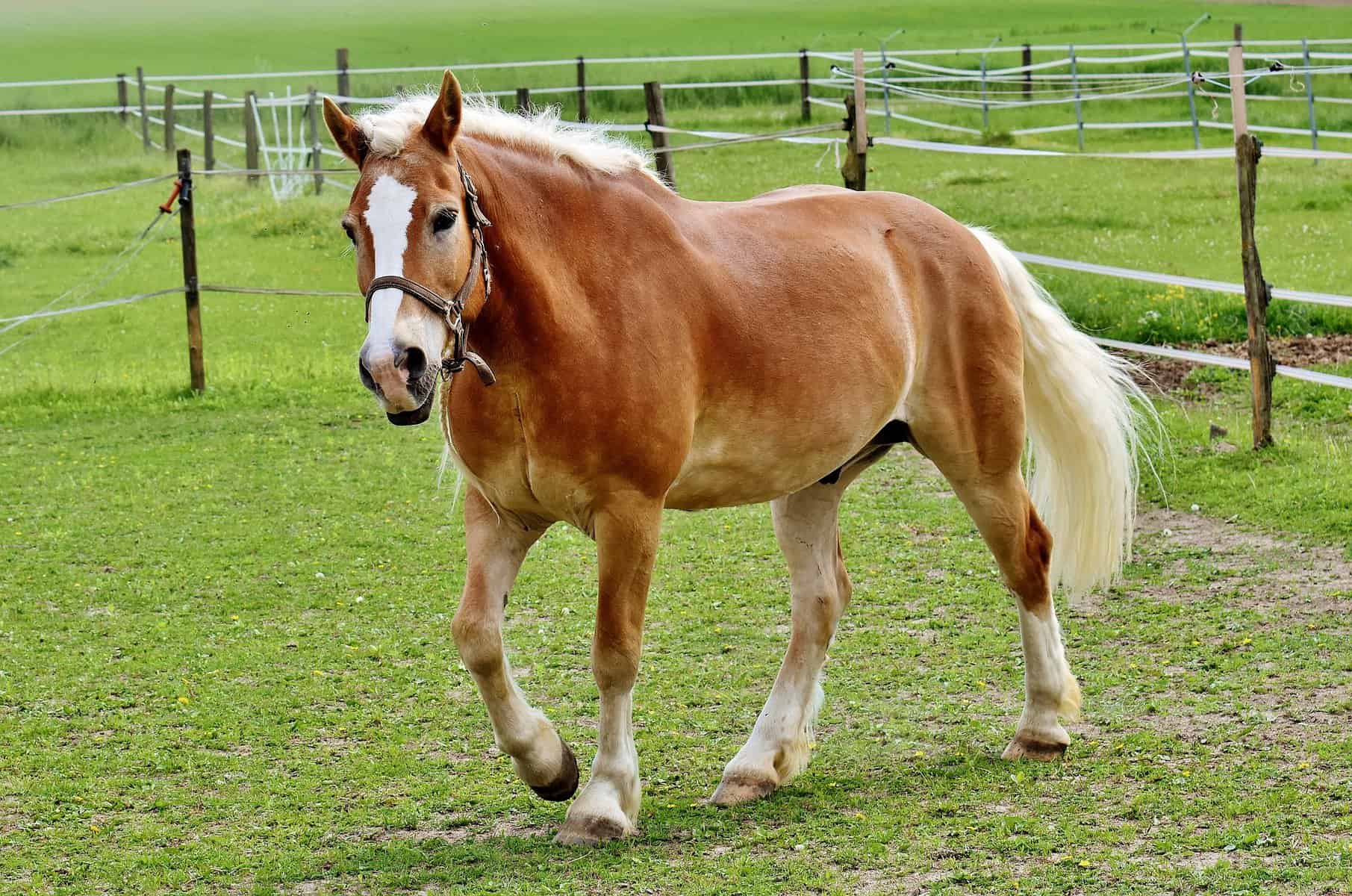
While friendliness and the laid-back demeanor seem to be key traits that most of the Haflingers exhume, it shouldn’t come off as a surprise that you will also have the occasional odd egg in the batch too.
So, in some cases these horses can end up being a bit hard-headed, and a lot of the times they can even end up trying to test their riders as they do the opposite of what you ask of them.
The reason as to why this is important to keep a mental note on is the fact that that Haflingers are quite strong.
So, if they get it through their head that they want to go up against what you just told them to do, chances are that they’ll be able to force out whatever outcome they want.
It isn’t unheard of to hear of Haflingers that have overwhelmed their beginner riders, which is why you should invest a decent amount of money into professional training to avoid this altogether.
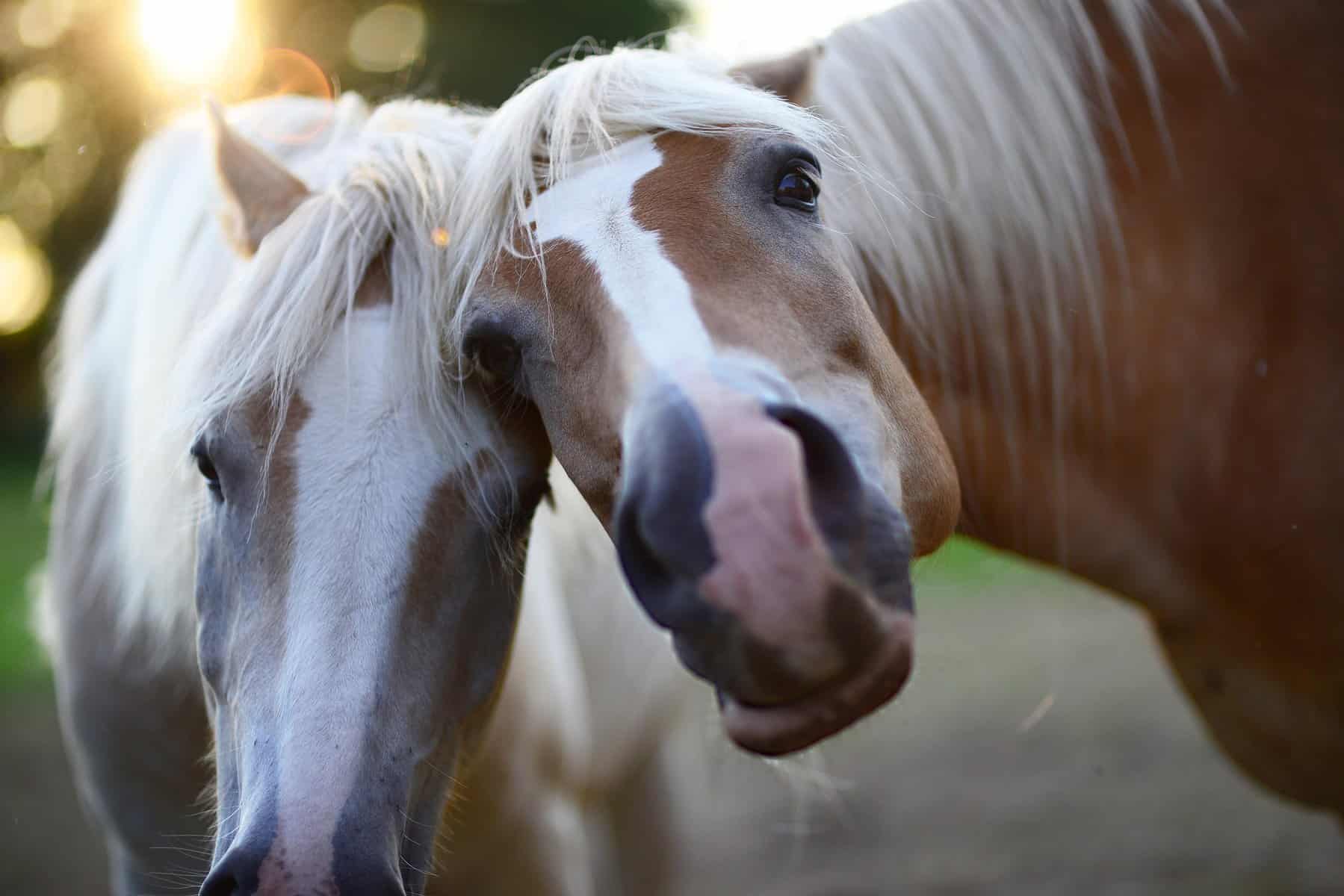
At the same time, while this breed is generally considered to be one of the hardiest around, there are still two main perpetrators that we think you should look into before making you purchase:
- Laminitis – This is a very common hoof condition which results in the coffin bone rotating and sinking, pretty much separating it from the hoof wall. This is a very serious disease that will cause a lot of pain for your horse. It is usually caused by feeding your horse too much rich grain or lush grass, which is why we mentioned just how important a strict diet is for them
- Equine Metabolic Syndrome – This condition on the other hand also has to do with your horse’s diet, as it usually results in your horse becoming obese. This is a problem because obesity can lead to a lot of other problems, including a higher risk of laminitis and more
How Much Do Haflinger Horses Cost?

Because of how popular this horse breed is, you can expect to find it at any reputable horse breeder around.
Most of these horses are well-trained and well-bred, which will also reflect a lot in their general price, with most o them costing upwards of $5,000.
If you want to get your hands on a competitive show horse though, you can expect to have to pay at least around $10,000, although in a lot of cases this can increase to $20,000 or more.
If you want to buy a Haflinger horse, we recommend that you opt for a reputable breeder or training program. This will be quite a bit more expensive, but it’ll be well worth it, especially if you ant a good competition horse around your farm.
You may also come across a random Haflinger horse that’s up for adoption. But if you plan on taking this route, just know that you’ll most likely get no real paperwork that will tell you about the horse’s potential or training.
Still, it’s very important that you ask as many questions as you can think of regarding the horse’s background, training and known temperament problems.
If you want an alternative to the Haflinger horse, you may also go for a Clydesdale, a Morgan or a Shire horse.
Final Thoughts
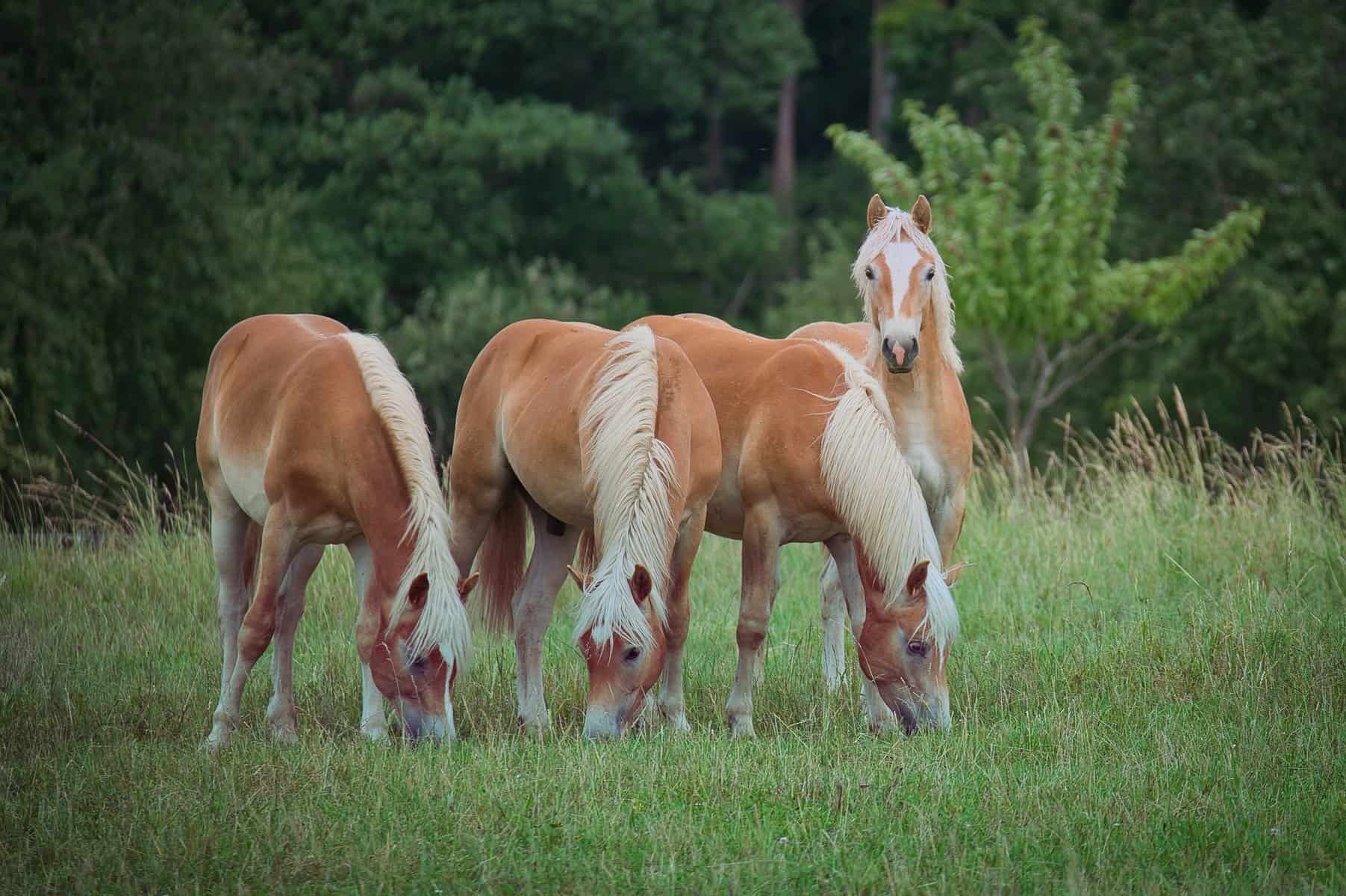
So, the question you should be asking yourself right now is the following: Is the Haflinger the right horse for me?
Well, let’s just take a look at the pros and cons that you’ll have to work with. After this just ask yourself if the pros outweigh the cons for you or vice versa.
So, these are the main pros that come with buying a Haflinger horse:
- They’re very surefooted and hardy horses
- They’re easy to keep around you
- They’re strong and dependable
- They’re versatile, being capable of participating in most any competition out there
As far as the main cons are concerned, this is what you should consider:
- They can get quite pushy if they haven’t been professionally trained or handled
- Their diet needs to be planned out extensively and failing to do so will usually lead to a lot of health problems for the horse
- They are a bit more expensive than most other breeds out there

